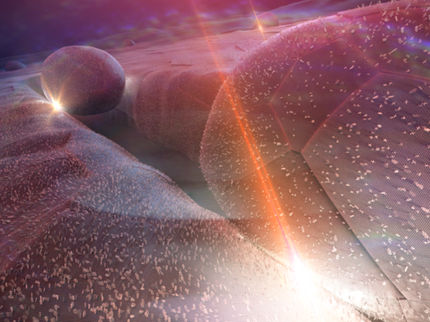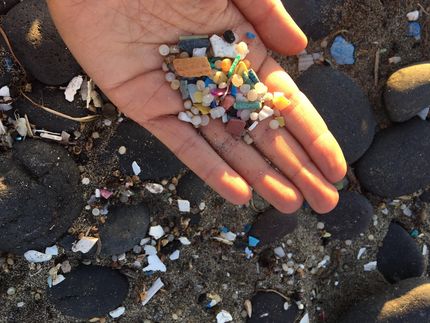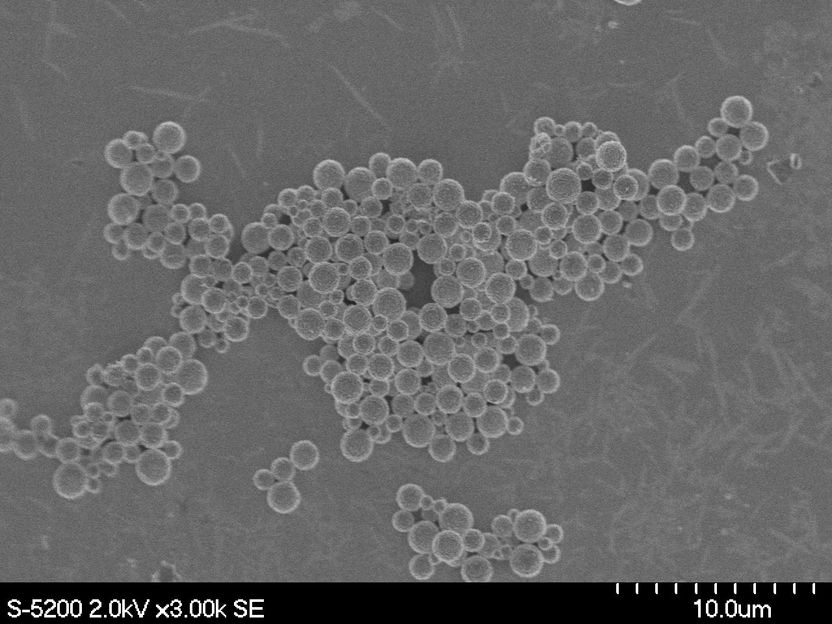Tiny plastic particles are found everywhere
Research leads to awareness
Microplastic particles can be found in the most remote ocean regions on earth. In Antarctica, pollution levels are even higher than previously assumed. This is one finding of a recent study involving researchers from the University of Basel.
It’s not the first study on microplastics in Antarctica that researchers from the University of Basel and the Alfred-Wegener Institute (AWI) have conducted. But analysis of the data from an expedition in spring 2021 shows that environmental pollution from these tiny plastic particles is a bigger problem in the remote Weddell Sea than was previously known.
The total of 17 seawater samples all indicated higher concentrations of microplastics than in previous studies. “The reason for this is the type of sampling we conducted,” says Clara Leistenschneider, doctoral candidate in the Department of Environmental Sciences at the University of Basel and lead author of the study.
The current study focused on particles measuring between 11 and 500 micrometers in size. The researchers collected them by pumping water into tanks, filtering it, and then analyzing it using infrared spectroscopy. Previous studies in the region had mostly collected microplastic particles out of the ocean using fine nets with a mesh size of around 300 micrometers. Smaller particles would simply pass through these plankton nets.
The results of the new study indicate that 98.3 percent of the plastic particles present in the water were smaller than 300 micrometers, meaning that they were not collected in previous samples. “Pollution in the Antarctic Ocean goes far beyond what was reported in past studies,” Leistenschneider notes. The study appears in the journal Science of the Total Environment.
What role do ocean currents play?
The individual samples were polluted to different extents. The offshore samples, which were collected north of the continental slope and the Antarctic Slope Current, contained the highest concentrations of microplastics. The reasons for this are not conclusively known. It may be that the ice that tends to form near the coast retains the tiny plastic particles, and they are only released back into the water when the ice melts. It could also be the case that ocean currents play a role. “They might work like a barrier, reducing water exchange between the north and south,” suggests Gunnar Gerdts from the AWI in Heligoland, Germany.
What is certainly true is that ocean currents are an important factor and the subject of many open questions in the field. So far the researchers have only examined water samples from the ocean surface, but not from lower depths. This is primarily due to limited time on the ship expeditions for taking samples and to equipment with insufficient pumping capacity. “It would nonetheless be revealing to analyze such data, since the deep currents differ greatly from the surface currents and thermohaline circulation leads to exchange with water masses from northern regions,” Leistenschneider says.
It is also still unclear how the microplastics make their way to the Weddell Sea in the first place and whether they ever leave the region. The strong Antarctic Circumpolar Current, which flows all the way around the Antarctic Ocean at a latitude of about 60° south, might prevent their departure. The researchers are also not yet able to say conclusively where the microplastics originate. Possible sources include regional ship traffic from the tourism, fishing and research industries, as well as research stations on land. However, the microplastics might also make their way to Antarctica from other regions via ocean currents or atmospheric transport.
Research leads to awareness
Clara Leistenschneider plans to focus next on analyzing the sediment samples she collected during the same expedition. This should provide information about how microplastics are accumulating on the sea floor, which is home to unique and sensitive organisms and is a breeding ground for Antarctic icefish (Bovichtidae).
With the increase in tourism in the Antarctic Ocean, pollution may increase even more in the future, further impacting the environment and the food chain.
Nonetheless, Leistenschneider remains cautiously optimistic: “Research on the topic has dramatically increased awareness in recent years of the problems that microplastics cause for the environment and all living organisms.” Although there is no all-encompassing solution, she notes that a variety of stakeholders all over the world are working intensively to better understand the problem and develop innovative ideas to reduce plastic pollution. And, of course, “every individual who engages in environmentally-conscious behavior can bring about positive change.”
Original publication
Other news from the department science
Most read news
More news from our other portals
See the theme worlds for related content
Topic World Spectroscopy
Investigation with spectroscopy gives us unique insights into the composition and structure of materials. From UV-Vis spectroscopy to infrared and Raman spectroscopy to fluorescence and atomic absorption spectroscopy, spectroscopy offers us a wide range of analytical techniques to precisely characterize substances. Immerse yourself in the fascinating world of spectroscopy!

Topic World Spectroscopy
Investigation with spectroscopy gives us unique insights into the composition and structure of materials. From UV-Vis spectroscopy to infrared and Raman spectroscopy to fluorescence and atomic absorption spectroscopy, spectroscopy offers us a wide range of analytical techniques to precisely characterize substances. Immerse yourself in the fascinating world of spectroscopy!































































